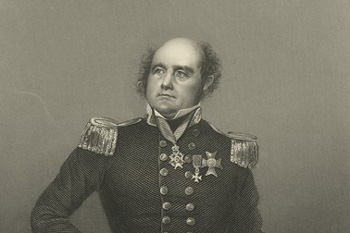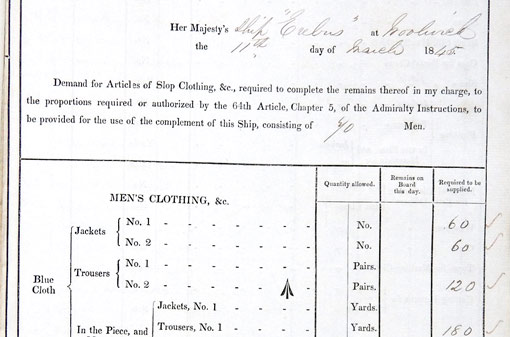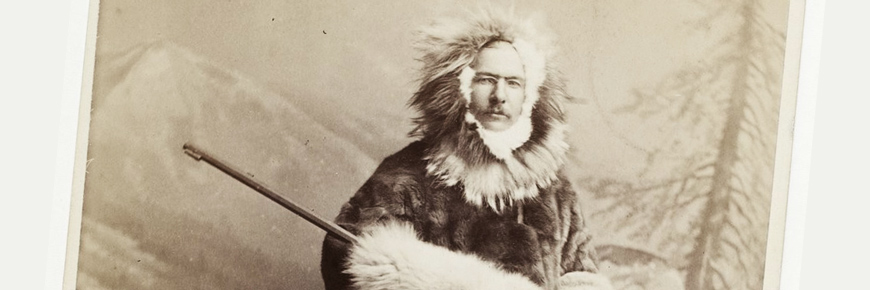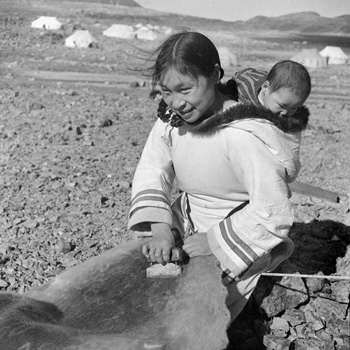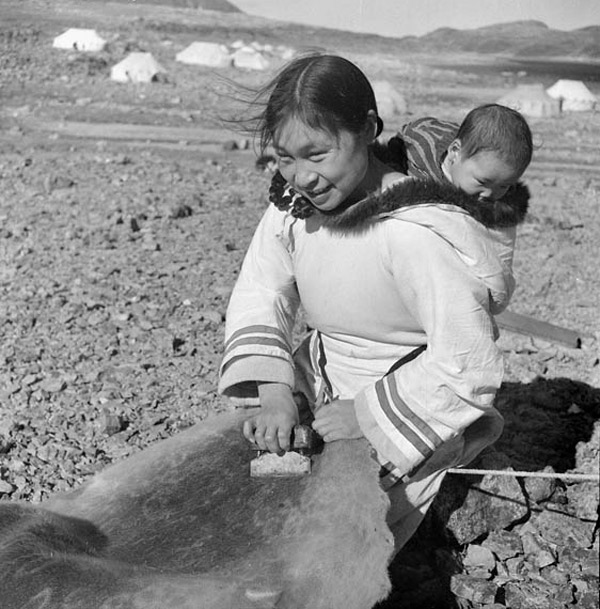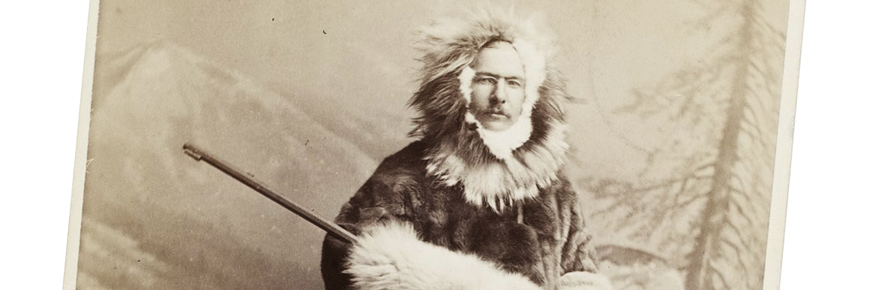
© Bibliothèque nationale de France
Dressing for Arctic exploration
Wrecks of HMS Erebus and HMS Terror National Historic Site
Members of the Franklin Expedition were Royal Navy sailors as well as Arctic explorers. Their clothing aimed to uphold naval tradition while protecting the wearer from Arctic conditions.
Fourteen members of the crew were Royal Marines. Unlike the regular crew members, who wore blue, marines wore red coats with a white lining and black leather caps. Parks Canada underwater archaeologists found examples of pewter buttons and a shoulder belt plate from Royal Marine uniforms aboard the shipwreck of HMS Erebus in April 2015. Equipped similarly to soldiers of the British army, marines enforced discipline aboard the ship and formed part of its defensive force.
The cost of British Navy uniforms
Naval uniforms changed over the course of the 19th century. New additions in 1843 significantly increased the cost of dress uniforms, particularly for the officers. In a letter to his father, Harry D. S. Goodsir, assistant surgeon aboard HMS Erebus, detailed costs, which would have been considerable for a junior warrant officer. Before sailing the men received six month’s pay in advance. For Goodsir this was £114.
"I have been up looking after my outfit & find it will be rather expensive. The Queen visits us on Tuesday next & if we all require to attend it will be a cause of great expense as we must appear in full dress uniform & a cocked hat alone costs £4. As it is I have been obliged to get a suit of undress uniform which I hope will be all that I need at present in that way. My suit of furs alone will cost from 8 to £10 & what with shirts, outer clothing bedding etc. it will come to something considerable. Government only gives us a certain amount of clothing annually, the rest we provide ourselves."Footnote 1
Uniforms for the Arctic
Warm winter clothing was issued to the crew for polar expeditions. In addition to their uniforms, officers had to bring warm clothing with them. Harry D. S. Goodsir made his own list which included:
Adoption of Inuit clothing
Many explorers preferred Inuit materials and techniques for their clothing. Royal Navy officer Sherard Osborn described Inuit clothing during a stop in Greenland, part of a 1850-1851 search for Franklin’s ships: “the clothing of the natives is vastly superior to anything we could produce, both in lightness of material, and wind and water-tight qualities; - the material, seal and deer skin, and entrails, manufactured by the women; their needles of Danish manufacture; their thread, the delicate sinews of animals. We gladly purchased all we could obtain of their clothing.”Footnote 2
Layers for warmth
Sherard Osborn gives a detailed account what was needed to keep crew warm over an Arctic winter: “Inside the ship, the men wore long-sleeved flannel shirts, a cotton shirt, a flannel-lined waistcoat with sleeves, flannel drawers, flannel-lined trousers made of box-cloth [definition: water-resistant felted yarn], two pairs of stockings, a horse-hair sole and a pair of boots. Outside, the men would wear a box-cloth pea jacket, a welsh wig [definition: knitted wool tuque], a seal-skin cap, beaver-skin mitts and a shawl. Men with sensitive skin covered their faces with a piece of cloth.”Footnote 3
Related links
- Date modified :
